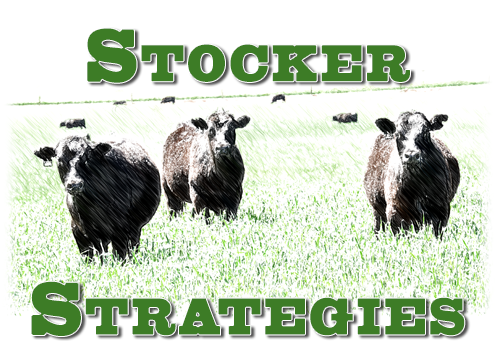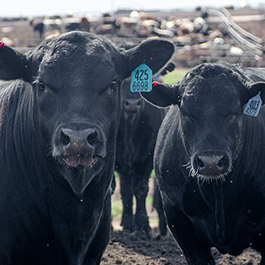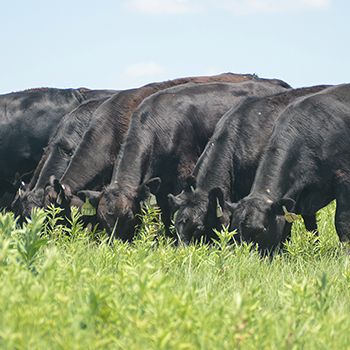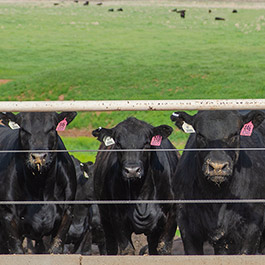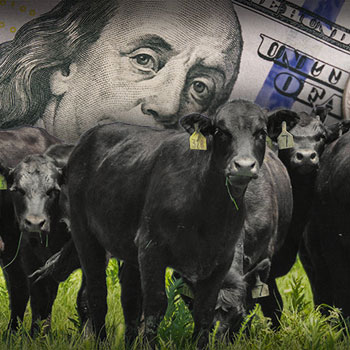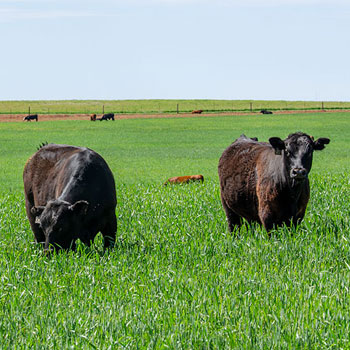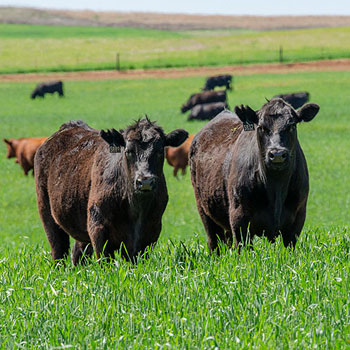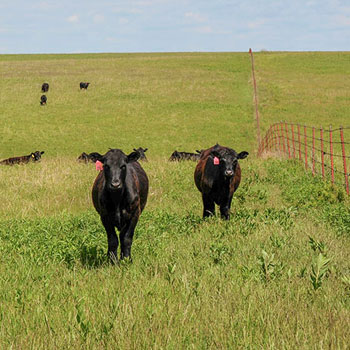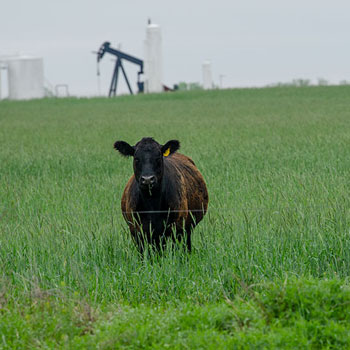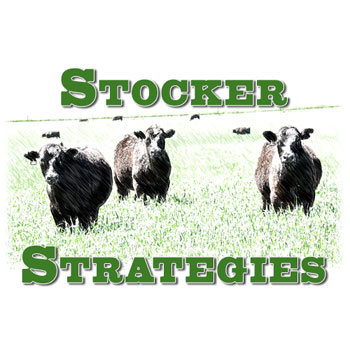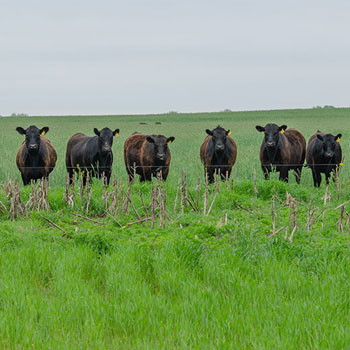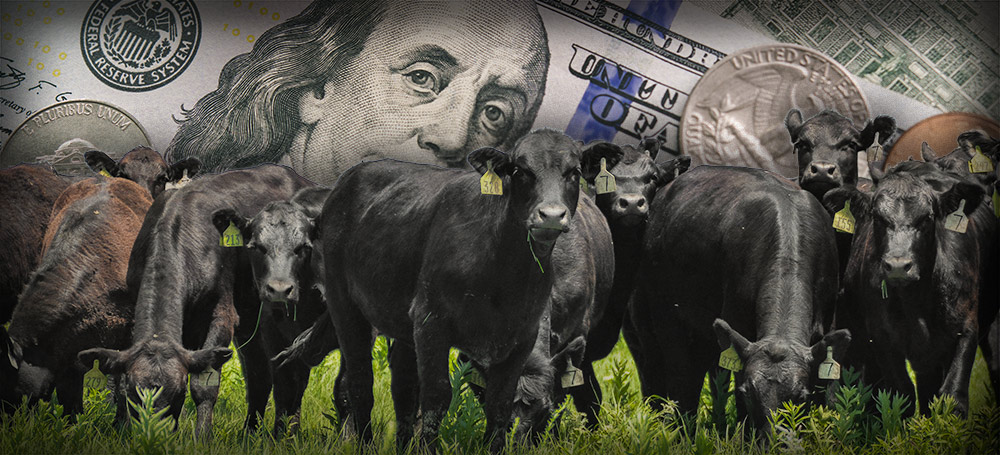
What Can I Pay?
Cattle producers put a pencil to purchasing spring stocker calves.
Cattle producers across Tennessee and the Mid-South often purchase stocker calves in the spring to put relatively cheap gain on the calves by using fescue/clover pasture. Fescue/clover pastures tend to produce large amounts of forage during spring and early summer, which provides adequate nutrition for growing stocker animals. Producers then look to market these animals later in the year when fescue growth slows due to increased temperatures.
Andrew Griffith, an assistant professor of agricultural and rural economics with the University of Tennessee Institute of Agriculture, says stocker calves can be bought and sold year-round. However, it can be more economical to purchase them in the spring and sell them in the late summer, because producers do not usually have to supplement their diet with grain.
Griffith offers producers an analysis of the production of stocker cattle on forages in Tennessee with no grain supplementation, based on a 120-day grazing period with a calf purchase date in April and a sale date in August.
“For this analysis we determined what a producer can pay for a given weight calf in April that is sold in August,” he said. “Stocker producers are margin operators. Therefore, it is imperative to be able to work backward from an expected sale price to a price for which a calf can be purchased given expected cost of gain, treatment costs for sick cattle and death loss.”
Griffith said analyzing large and medium No. 1 and No. 2 steer calves, with a starting weight of 400 pounds (lb.), 500 lb. or 600 lb., and assuming an average daily gain (ADG) of 1.2 lb. for 120 days, results in a weight gain of 144 lb. during the grazing period. He assumed a cost of gain (COG) of $0.75 per lb. of gain, treatment cost of $30 per head and death loss of 5%.
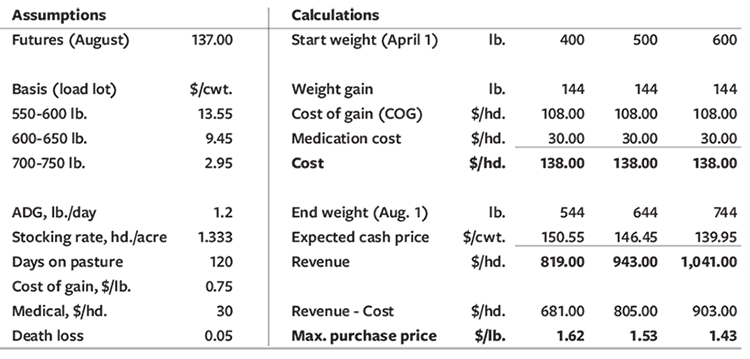 |
Griffith’s results indicate that a cattle producer could pay up to $162, $153 and $143 per hundredweight (cwt.) for large and medium No. 1 and No. 2 steers weighing 400, 500 and 600 lb. respectively in April and that would be marketed in August. This “max purchase price” is a breakeven price for cost of gain, health treatments and death loss. It does not account for fixed costs, labor, marketing costs or procurement costs. The current market conditions indicate that a more positive margin could be achieved with heavier calves.
Alternatives that should be considered in relation to the class of cattle purchased include buying bull and heifer calves. Generally, bull and heifer calves require increased management, but the increased management could prove to increase value. Another option is purchasing cattle that have been mismanaged and can be upgraded, Griffith said.
The economist recommends a tool developed by University of Tennessee Extension that can be beneficial to this decision process of purchase price and sale price: the Buy Sell Margin Calculator. This tool can be downloaded as an Excel file at https://ag.tennessee.edu/arec/Lists/DecisionAids/DispForm.aspx?ID=6.
Editor’s note: This article is provided by the University of Tennessee Institute of Agriculture, and updated by Andrew Griffith.
